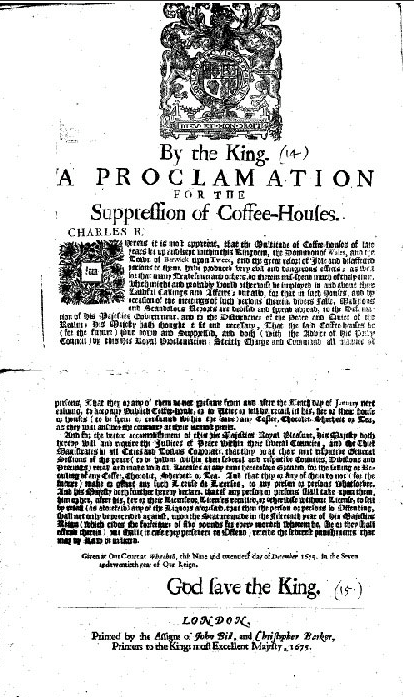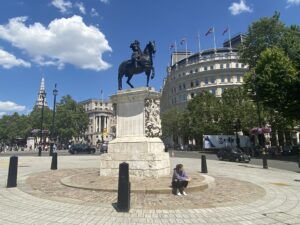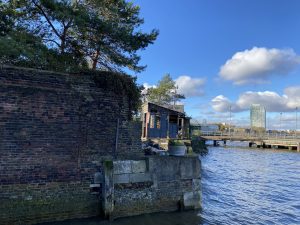Coffeehouses became a hub of news and inevitably a place where new ideas were formed. Boy runners were sent from coffee house to coffee house in order to relay information on major events of the day. After a while coffeehouses became members only clubs in order control the clientele and raise the status of the particular coffeehouse. This conversion of coffee houses into clubs came at the same time as coffee consumption began to decline due to import duties on coffee increased significantly. It was also at this time the East India Company began importing tea.
These two factors contributed to the decline and eventual disappearance of the coffee house culture in London. At the end of the 19th century there were an estimated 1,400 coffee houses in London, but the essence of coffee house life that had once been a large part of London’s society was lost for it only to be partially reborn in the coffee shops of today. London coffee houses of the 18th century were also sometimes places of illicit behaviour. Like taverns, some coffee houses provided private rooms where activities such as prostitution occurred, probably to the knowledge and perhaps benefit of the owners.
A Place for Business
The London coffee house provided a relaxing atmosphere that man had not enjoyed in the seventeenth century. People found comfort in the ability to express ideas freely among members of their community. The previous era of religious and civil unrest made this opportunity seem especially relieving and enjoyable. Stockbroker’s usually met at Jonathan’s Coffee House in Change Alley. This eventually became the London Stock Exchange.
Private Members Clubs
Coffee houses often required patrons to abide by a set of rules that kept the atmosphere peaceful. While all coffee houses had their own set of rules, some might include: the prohibition of fighting, excessive talking, blasphemy, gambling, or discussion of sacred issues. The tradition of tipping service staff arose in coffee houses. Those that wanted good service and priority seating would put money in a tin labelled, “To Insure Prompt Service”–hence, the term Tips came to be. Coffee houses also provided the starving artist a place to expose his work or make business contacts. Writers and actors also benefited from these surroundings because it offered the opportunity for them to meet people who might help them produce their art.
A Den of Sin
In 1673, a pamphlet was published called “The Character of a Coffee” that condemned the activities that went on at such establishments. It claimed that the coffee was served out of dirty pots and brewed from the soot left on the bottom of an old pot. It also looked down upon the diverse groups of people that mingled inside coffee houses, and the free thought that was allowed to occur there.
Health Benefits and Warnings of Drinking Coffee Coffee was thought of as an intellectual rather than what is sometimes thought as a sexual drink, perhaps by providing a stimulant to the brain, keeping the drinker alert rather than relaxed as alcohol has a tendency to do. The alleged medicinal effects of coffee were discovered in the 1600’s. During a time when alcoholism raged throughout Europe, many professionals agreed that coffee was its cure. Edward Pococke thought that helped with “consumption, ophthalmia and dropsy…could cure gout and scurvy and even prevent smallpox!”
The negative aspects of caffeine were also noticed around the 1600s. One doctor cited languor, paralysis, heart attacks and trembling as risks of consuming large amounts of coffee.
Prussia’s Frederick The Great pushed his subjects to drink beer instead of coffee and claimed that coffee was “disgusting” in order to try and block imports of green coffee in 1775.
A Hotbed of Revolution
Charles II tried to suppress coffee houses as he feared they are ‘hotbeds of revolution”. His proclamation is revoked after the public protests this proclamation and the ban is lifted after just 11 days. See a copy of this proclamation:

Learn more about how the coffeehouses influenced the culture of London in the 18th century in our London History Podcast Episode 11: London’s Coffeehouses and Commerce.



